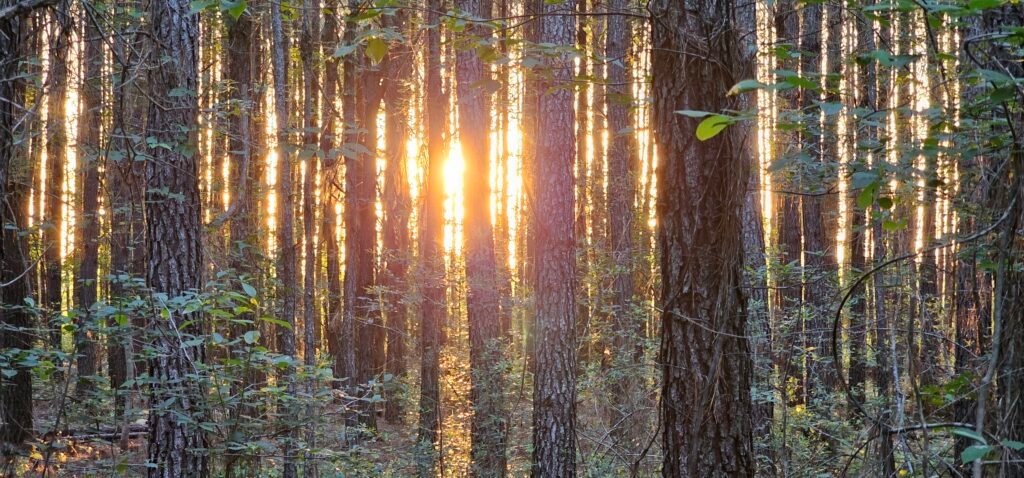South Carolina’s 8,000 Roadless Acres Could Lose Protections Under Federal Proposal
COLUMBIA, SC — More than 8,000 acres of roadless land in South Carolina’s national forests could soon be vulnerable to development, logging, and mining, as the U.S. Department of Agriculture (USDA) moves to revoke the long-standing federal “Roadless Rule.” Conservationists say the change would pose a serious threat to some of the state’s most pristine and ecologically critical habitats.
What Is the Roadless Rule — and Why Is It at Risk?
Established in 2001, the Roadless Area Conservation Rule prohibited the construction of new roads across 58.5 million acres of federal forestland in the U.S. The intent was to keep ecologically sensitive areas intact, protect wildlife habitats, and prevent urban sprawl from creeping into public forest lands.
But in June 2025, USDA Secretary Brooke Rollins announced a proposal to rescind the rule, calling it “outdated and overly restrictive.” She said the change would allow for more flexible forest management, including wildfire mitigation and increased state-level control over land use.
“Properly managing our forests preserves them from devastating fires and allows future generations of Americans to enjoy and reap the benefits of this great land,” Rollins said.
SC Forests at Stake: Francis Marion and Sumter
South Carolina has two national forests — Francis Marion, spanning 259,000 acres in Charleston and Berkeley counties, and Sumter National Forest, with over 375,000 acres across three state regions.
Of those combined areas, just over 8,000 acres remain roadless, making up a little more than 1% of the state’s national forest lands. By comparison, Georgia has 63,000 roadless acres, and North Carolina has 172,000.
Though small in scope, South Carolina’s roadless acres are seen as uniquely important due to their limited size and vulnerability to nearby suburban development.
Conservationists Warn of Irreversible Damage
Environmental advocates have raised alarms over the proposed rollback. The Southern Environmental Law Center stressed that roadless areas support endangered wildlife, attract eco-tourism, and offer quiet refuges for outdoor recreation such as hiking and kayaking.
“The Roadless Rule promises that our least-developed public lands can be enjoyed by all of us for generations to come without the threat of reckless roadbuilding and other destructive projects,” said Sam Evans, director of the group’s National Forests and Parks Program.
“Getting rid of the rule would open these areas to mining, oil and gas development, and timber production,” Evans added.
Conflicting Views on Wildfire Risk
One justification for lifting the rule, according to the USDA, is improved wildfire prevention through expanded road access. But April Donnelly with the Nature Conservancy of South Carolina pushed back, noting that current regulations already allow for controlled burns and debris clearing in roadless areas — so long as no roads are built.
“Fires aren’t more common in roadless areas,” Donnelly said. “Forest managers already conduct stewardship activities like prescribed burning.”
She added that protecting intact forest land is increasingly critical in the face of climate change. Many of these roadless acres, she said, are located in biodiversity hotspots with unique ecosystems that are naturally resilient to warming temperatures.
Next Steps: Public Comment and Environmental Review
Although the USDA has not set a final timeline, rescinding the rule will require:
- An environmental analysis
- Consultation with state officials
- A formal public input process
Until then, protections remain in place — but conservation groups are already mobilizing to defend the rule.
“In an increasingly developed landscape, large unfragmented tracts of land become more important,” the original 2001 rule stated — a sentiment conservationists say still holds true today.
More information is available via the US Forest Service.
Do you visit South Carolina’s national forests for hiking, fishing, or nature viewing? Share your experience and thoughts on the USDA proposal with the Saluda Standard-Sentinel.







